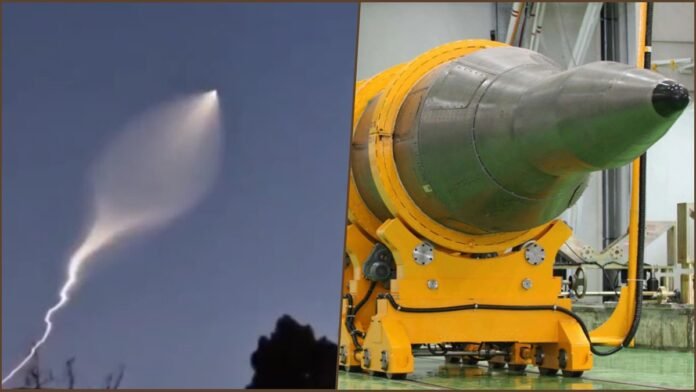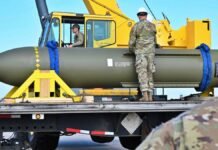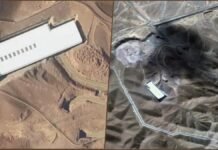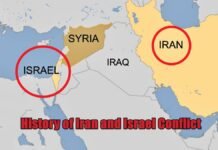
Key Points
- Iran has launched its advanced Sejjil ballistic missile at Israel for the first time, marking a significant escalation in the ongoing conflict.
- The Sejjil is a two-stage, solid-fuel, medium-range missile with a reach of up to 2,500 km, capable of carrying a 500–1,000 kg warhead at hypersonic speeds.
- Iranian officials claim the missile targeted strategic military sites in Beersheba, temporarily disrupting Israeli air defenses and causing property damage.
- The Sejjil’s rapid launch, high accuracy, and mobility make it a formidable challenge for Israel’s advanced air defense systems.
- The missile’s deployment signals a new phase in Iran’s missile program and could shift the regional strategic balance.
New Delhi: In a dramatic escalation of the Iran-Israel conflict, Iran’s Islamic Revolutionary Guard Corps (IRGC) has confirmed the first-ever operational use of its advanced Sejjil ballistic missile against Israeli targets. The 12th wave of Iran’s “Operation True Promise 3” saw the deployment of these ultra-heavy, long-range missiles, with Iranian officials claiming direct hits on military installations in Israel’s Beersheba region.
What Makes the Sejjil Missile Unique?
The Sejjil missile represents a major leap in Iran’s indigenous missile technology. It is a two-stage, solid-fuel, medium-range ballistic missile (MRBM) with an operational range between 2,000 and 2,500 kilometers enough to reach all of Israel, parts of southeastern Europe, and U.S. bases in the Gulf. Its solid-fuel propulsion allows for rapid launch and high mobility, making it far harder to detect and intercept compared to older liquid-fueled missiles.
Key Features:
- Range: 2,000–2,500 km
- Warhead: 500–1,000 kg (conventional or potentially nuclear)
- Speed: Hypersonic, up to Mach 13
- Accuracy: Within 10–50 meters of the target
- Launch Platform: Road-mobile transporter erector launcher (TEL)
- Guidance: Inertial navigation with GPS updates for improved precision
Impact and Damage: What Happened in Beersheba?
According to Iranian sources, the Sejjil missile targeted high-value military and intelligence installations in Beersheba, including command centers and tech parks. The strike triggered air raid sirens and caused significant property damage vehicles and buildings near the Gav-Yam Negev tech park caught fire, and debris reportedly damaged the nearby Soroka hospital. While Israeli air defenses intercepted some missiles, others managed to bypass the shield, exposing vulnerabilities in Israel’s multi-layered defense systems.
How Does the Sejjil Compare to Other Missiles?
The Sejjil’s design is fully indigenous, though some analysts compare its solid-fuel, road-mobile characteristics to Russia’s Iskander missile. However, the Sejjil far outstrips the Iskander in range (up to 2,500 km versus Iskander’s 500 km) and payload capacity.
| Feature | Sejjil (Iran) | Iskander (Russia) |
|---|---|---|
| Range | 2,000–2,500 km | ~500 km |
| Fuel Type | Solid | Solid |
| Payload | 500–1,000 kg | 480–700 kg |
| Mobility | Road-mobile | Road-mobile |
| Guidance | Inertial + GPS | Inertial + GPS |
Strategic Significance: Why Does This Matter?
The Sejjil’s use in active combat marks a turning point for Iran’s missile program and the broader regional balance. Its rapid launch capability, high accuracy, and ability to evade interception present a new challenge for Israel’s Iron Dome and Arrow defense systems. The missile’s deployment also signals Iran’s intent and capability to strike deep into enemy territory without relying on proxies.
The Road Ahead: Escalation or Deterrence?
While Iran claims the attack temporarily disrupted Israeli air defenses, independent verification remains limited due to wartime censorship in Israel. Nonetheless, the Sejjil’s operational debut is a clear message of deterrence, with Iranian officials warning of further, more severe responses if hostilities continue.
Iran’s unprecedented use of the Sejjil missile in its strike on Israel marks a significant escalation in the ongoing conflict, showcasing advanced missile technology with the potential to alter the regional strategic landscape. The missile’s speed, range, and accuracy challenge even the most advanced air defense systems, raising the stakes in the volatile Middle East.










































